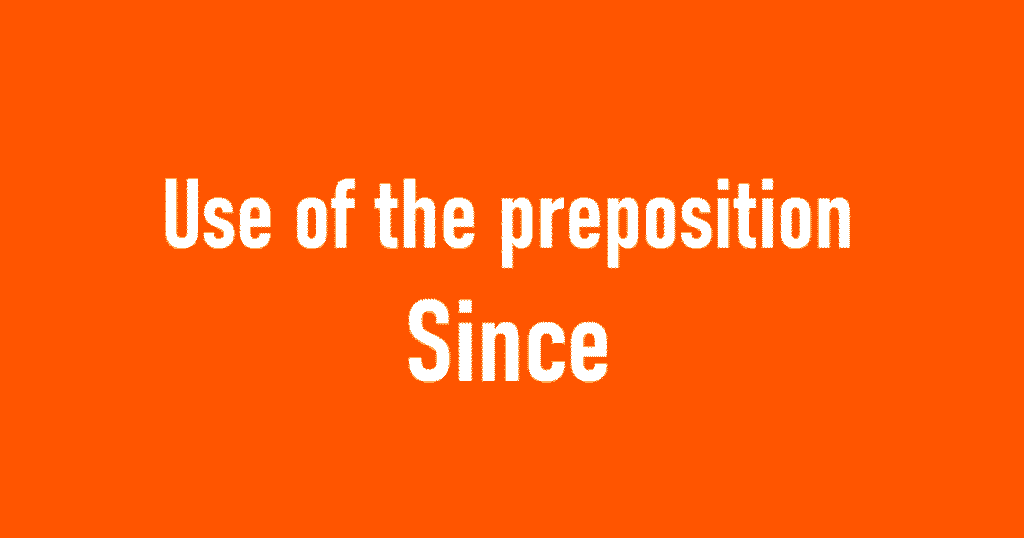Use of the preposition outside. “Outside.” It’s a word we use practically every day. We talk about going outside, playing outside, and even thinking outside the box. But have you ever stopped to truly consider the nuances of this seemingly simple preposition? “Outside” carries a surprisingly versatile range of meanings and functions within the English language, extending beyond its most basic definition of “not inside.”
This blog post aims to be your definitive guide to understanding the preposition “outside.” We’ll delve into its core meanings, explore its usage in different contexts, highlight common idioms and phrases that feature “outside,” and even touch upon its subtle interplay with other prepositions. By the end of this post, you’ll have a clearer understanding of how to use “outside” effectively and accurately.
Use of the preposition outside
The Core Meaning: Beyond the Enclosure
At its most fundamental, “outside” signifies a location or condition that is not within a defined space, boundary, or structure. Think of it in terms of physical space first:
- “The cat is outside the house.” This simple sentence paints a clear picture. The cat’s current location is not within the walls and roof of the house. It’s in the yard, on the porch, or anywhere beyond the confines of the building.
- “They played outside in the garden.” Here, “outside” contrasts with the implied “inside,” suggesting the action happened in the open air, beyond the enclosed space of a building (likely a house, but could be another structure).
This core meaning extends beyond just buildings. It can apply to:
- Containers: “The keys are outside the box.”
- Vehicles: “He waited outside the car.”
- Fenced Areas: “The sheep are outside the fence.”
- Countries/Regions: “The package originated outside the country.”
In all these cases, “outside” denotes a position that is not contained within the specified boundaries.
Beyond Physical Space: Abstract and Figurative Uses
The power of “outside” lies in its ability to transcend the strictly physical. We frequently use it in abstract and figurative contexts to express ideas of being:
- Beyond a Limit or Scope: “This issue is outside my area of expertise.” Here, “outside” signifies a boundary of knowledge. The topic falls beyond the speaker’s established knowledge base.
- Outside a Process or System: “He felt outside the group, like an outsider.” In this context, “outside” implies exclusion from a social circle or group. The individual doesn’t feel included or accepted within the established dynamic.
- Outside the Norm or Expected Behavior: “Her reaction was outside the usual range.” This highlights that her response was unconventional or unexpected, deviating from typical patterns.
- Unaffected By: “The decision was made outside the influence of political pressure.” This indicates that the decision-making process was independent and not swayed by external political forces.
These abstract uses demonstrate the flexibility of “outside” and its ability to convey complex ideas about boundaries, limitations, and inclusion.
Grammatical Function: Preposition, Adverb, and Noun
While our focus is primarily on “outside” as a preposition, it’s important to acknowledge its other grammatical roles:
- Preposition: As we’ve explored, “outside” functions as a preposition when it governs a noun or pronoun, indicating the location or condition relative to that noun or pronoun. (e.g., “Outside the stadium,” “Outside her understanding”)
- Adverb: “Outside” can also function as an adverb, modifying a verb, adjective, or another adverb. When used as an adverb, it often indicates direction or location. (e.g., “Go outside,” “The door opens outside.”)
- Noun: Less commonly, “outside” can function as a noun, referring to the exterior of something. (e.g., “The outside of the building needs painting.”)
Understanding these different functions is crucial for accurate interpretation and usage.
Idioms and Phrases Featuring “Outside”
“Outside” features prominently in a variety of idioms and phrases, enriching the English language and often carrying metaphorical meanings:
- Think Outside the Box: This popular idiom encourages creative and unconventional thinking, urging individuals to consider perspectives beyond established norms and constraints.
- On the Outside Looking In: This phrase describes the feeling of being excluded or observing a situation from a detached perspective, without being actively involved.
- On the Outside Chance: This refers to a very small possibility or a slim chance of success.
- At the Outside: This phrase indicates the maximum limit or extent of something. (e.g., “It will take an hour at the outside.”)
- Know Something Inside and Out: While this phrase uses “inside,” its opposite, “outside,” is implied. It means to be thoroughly familiar with something.
These idioms illustrate the diverse ways “outside” is used to convey abstract concepts and add color to our language.
“Outside” in Relation to Other Prepositions: A Comparative Look
To further refine your understanding of “outside,” let’s briefly compare it with other prepositions that share similar, yet distinct, meanings:
- “Outside” vs. “Beyond”: While both prepositions suggest being beyond a certain point, “beyond” often implies a greater degree of separation or a more abstract limitation than “outside.” “Outside the city limits” suggests a literal geographical boundary, while “beyond comprehension” suggests something is impossible to understand.
- “Outside” vs. “Out of”: “Out of” often emphasizes the act of moving from an interior to an exterior space, or the state of no longer being within something. “She went outside” focuses on her location relative to the interior, while “She went out of the house” focuses on the act of leaving the house. “Out of” can also indicate a lack of something (e.g., “Out of milk”).
- “Outside” vs. “Off”: “Off” typically implies detachment or separation from a surface or structure. “The picture fell off the wall,” while “The chair is outside.”
Understanding these subtle differences helps you choose the most appropriate preposition to accurately convey your intended meaning.
Practical Tips for Using “Outside” Correctly
Here are some practical tips to help you use “outside” effectively and accurately:
- Consider the Context: Always consider the context of the sentence to determine the most appropriate meaning of “outside.” Is it referring to a physical location, an abstract concept, or part of an idiom?
- Think About Boundaries: Identify the defined space, boundary, or structure that “outside” is referencing. This will help you clarify the relationship between the noun or pronoun governed by “outside” and the designated space.
- Pay Attention to Grammar: Be mindful of whether you’re using “outside” as a preposition, adverb, or noun, and adjust your sentence structure accordingly.
- Learn the Idioms: Familiarize yourself with common idioms that feature “outside” to enhance your vocabulary and communication skills.
- Practice and Observe: Pay attention to how “outside” is used in everyday conversations, books, and articles. The more you observe and practice, the more comfortable and confident you’ll become in using this versatile preposition.
Conclusion: Mastering the Nuances of “Outside”
“Outside” is more than just a word; it’s a powerful tool for expressing location, boundaries, and abstract concepts. By understanding its core meanings, exploring its various functions, and familiarizing yourself with its idiomatic uses, you can significantly enhance your command of the English language. So, the next time you use “outside,” take a moment to appreciate its versatility and the subtle nuances it brings to your communication. You might just find yourself thinking outside the box about the very preposition you’re using!
Read Also,
- Learn all prepositions
- Use of the preposition above
- Use of the preposition about
- What is Religion
- News in Hindi
- Human vs AI
- Very Important Word Lists
>>> Sir Sahil


